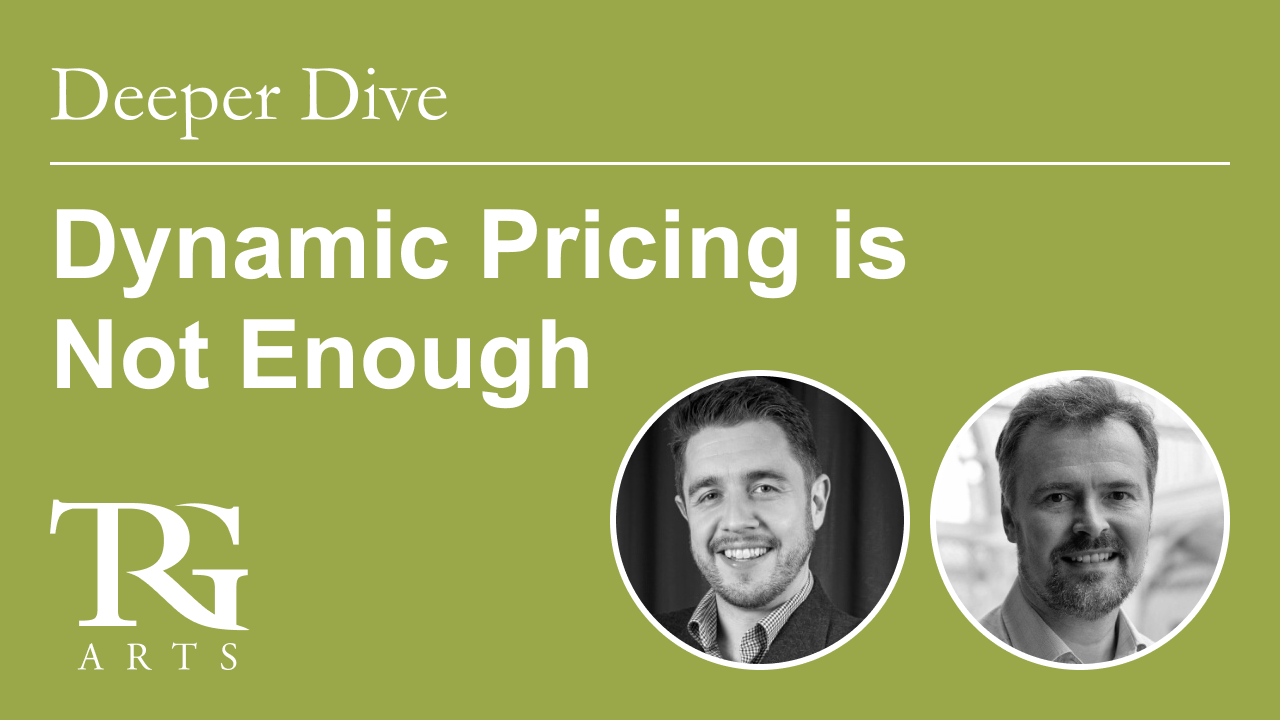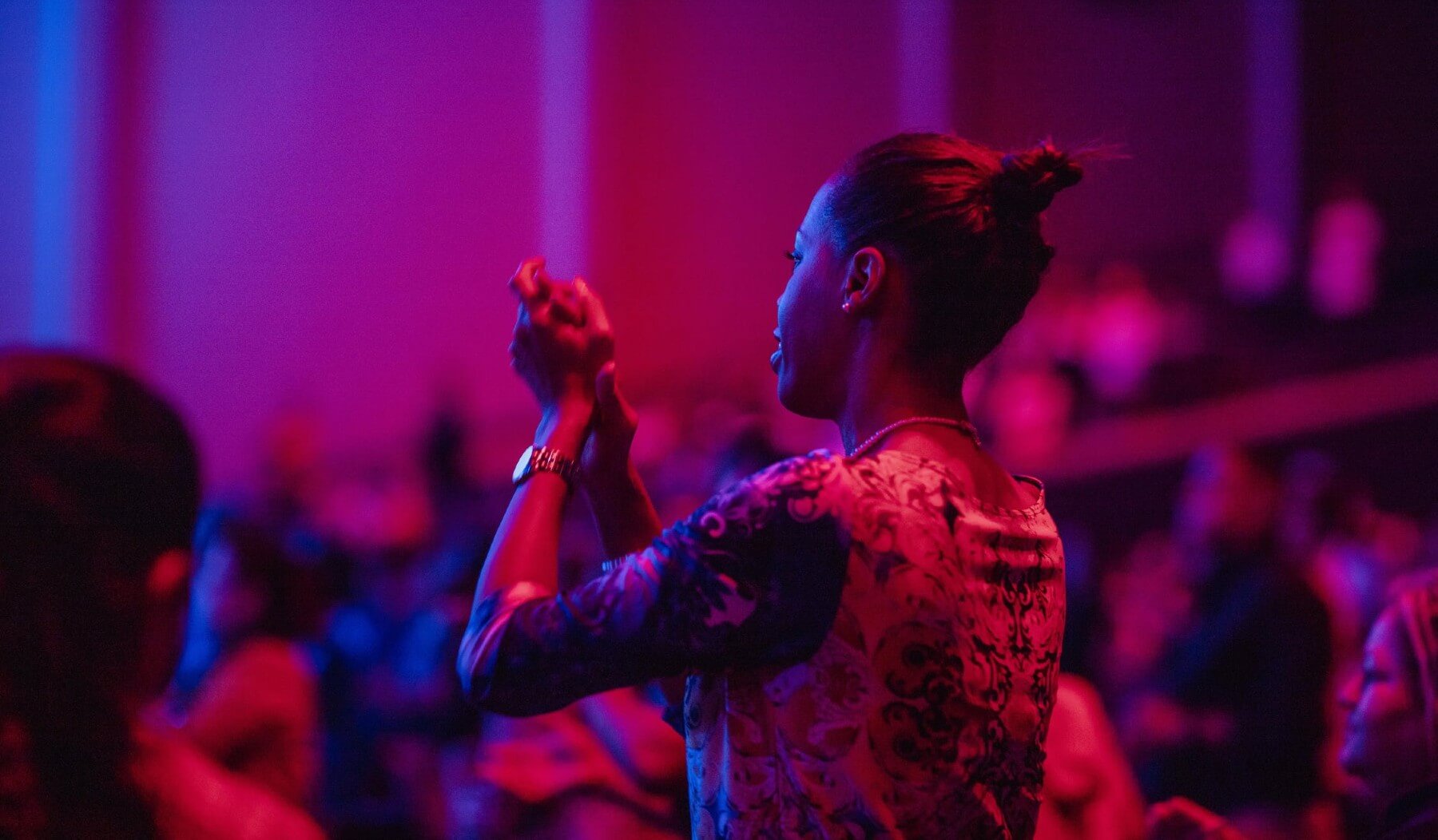The Same "Old Chestnuts"
My toddler is obsessed with Daniel Tiger’s Neighborhood, a popular kids’ show on public television here in the United States.
We listen to an album from the show over and over, every time we’re in the car together. It’s a wonderful show designed to build empathy and grow emotional intelligence, but sometimes, I just want to turn on my beloved classical music station to catch a snippet of Chopin or Shostakovich between album cycles. “Mommy, I was listening to that!” comes my son’s indignant voice from the backseat.
If you’ve been an arts administrator for any length of time, this scenario might echo your experiences of building season programs and budgets. We want to bring artistic works to the stage that speak to our communities, that challenge us to grow, that expand our vision of the world. Those works, however, don’t always find the volume of revenue and audience needed to fuel our organizations, so we find ourselves revisiting the “same old chestnuts”, year after year, to balance the budget. It can leave us feeling like we’re only valuable when we play the hits.
This constant tension between financial blockbuster and bust can feel like you’re riding a bucking bronco, holding on for dear life. What if we could tame the beast and harness the power inherent in the full range of our programming to create the artistic, audience, AND revenue impact you’re seeking? Let’s get started!
The Blockbuster's Role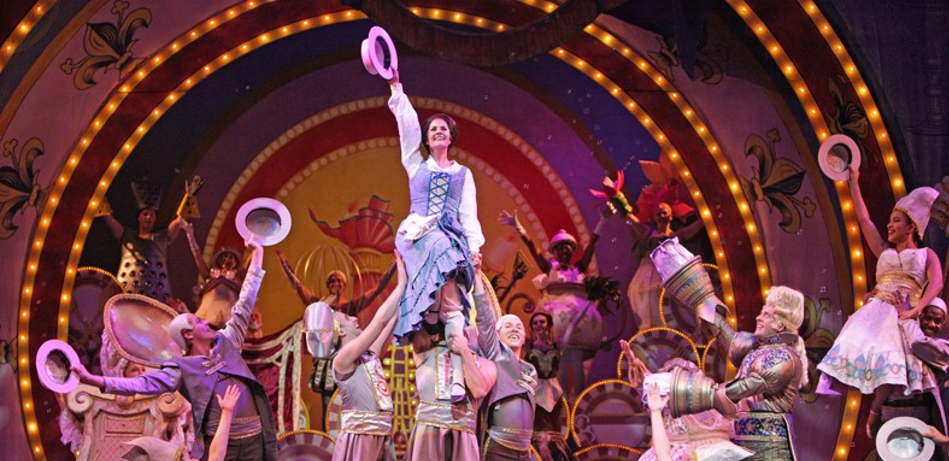
At TRG Arts, when we talk about a blockbuster, we’re referring to a program or event that drives volume, both in audience attendance and revenue generated. The tried-and-true (annual holiday productions), the evergreen beloveds (Beethoven’s Ninth, Swan Lake), and the breakout hits (Hamilton). We’ve done them so often in our careers that we may no longer find adventure or discovery in returning to them. But we know they’ll provide the shot of revenue and ticket sales we need.
Yet most organizations still have untapped potential in these popular programs – even when we’re hitting budget goals and filling halls. Audiences often love returning to these familiar works, as part of annual tradition that brightens their season or introducing friends and family to a piece they love. This is the perfect time to engage existing members and subscribers by providing early access to secure their seats, or to “renew” the ticket experience for past buyers to that blockbuster, extending the lifecycle of that existing audience.
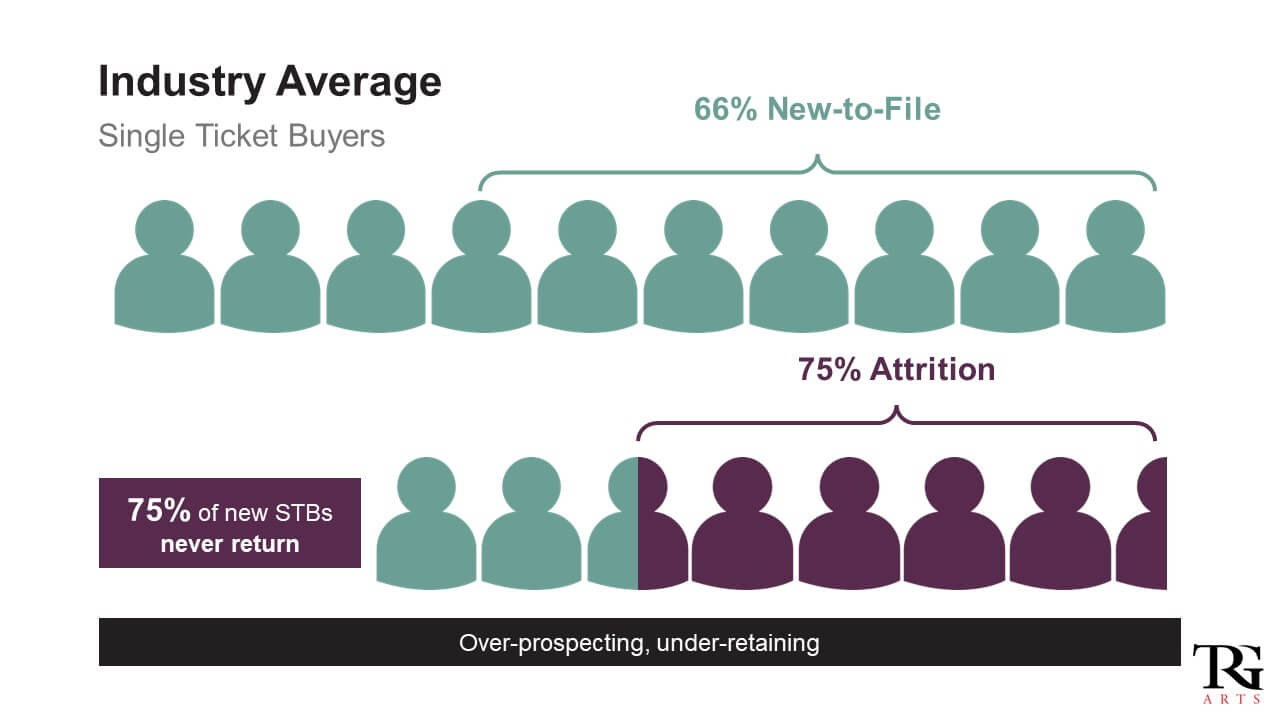
Speaking of retention, TRG research shows that arts organizations generate large swaths of new audiences every season, 66% of total ticket buyers annually. Of those folks, 75% will walk out the door and never return. With a blockbuster comes a big infusion of brand new ticket bookers. Before the program even happens, make your plans to follow up that performance with an invitation to return. When we get a new ticket booker to return a second time, that churn rate drops from 75% down to just 35%. Have you laid a foundation to build off the momentum from your blockbuster, or will it just be another flash in the pan?
The Role of Adventurous Programming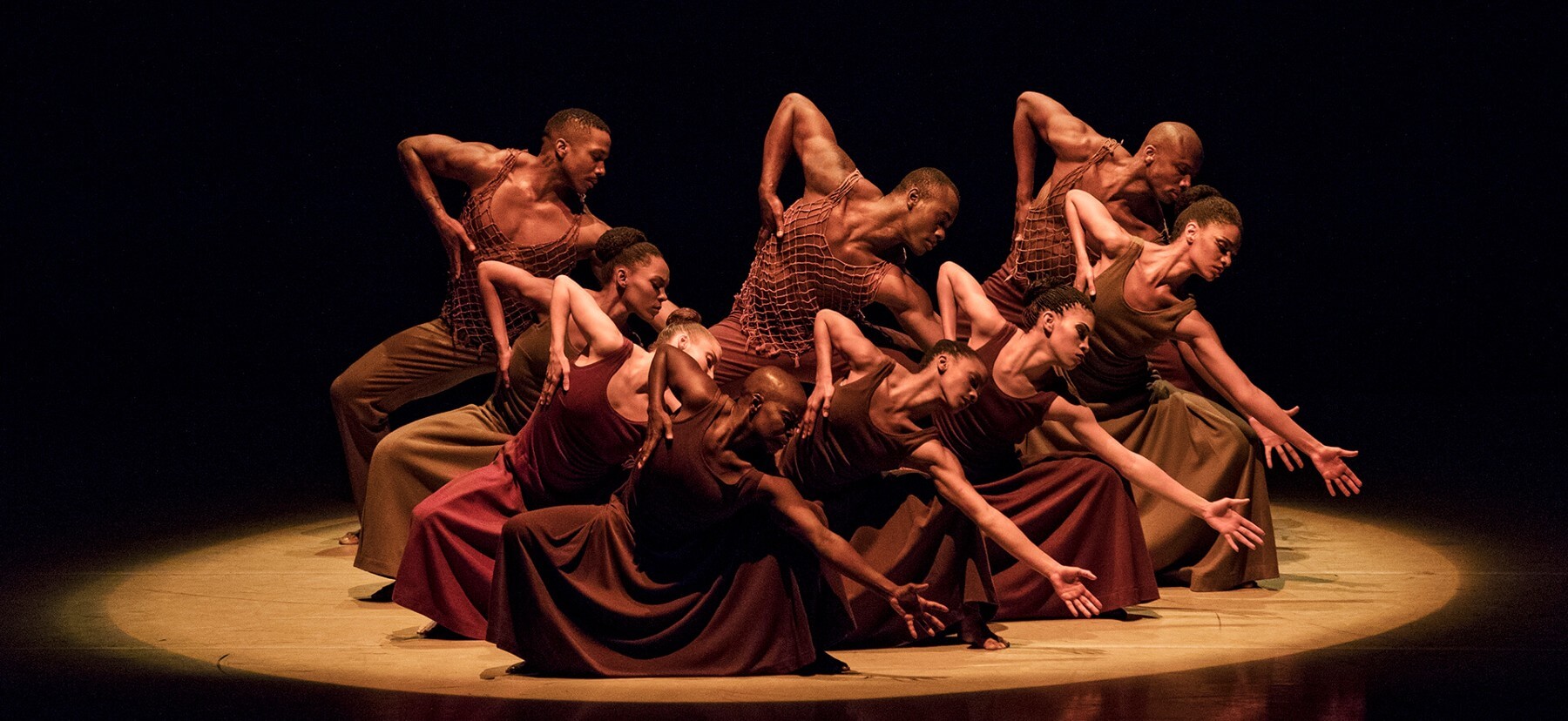
We all know commercial success does not necessarily correlate to intrinsic value or quality. Artistic departments and curators select programming because they believe in its artistic value and how it will connect with their communities. Those more artistically adventurous programs usually live along a softer spectrum of demand than their blockbuster counterparts. The key to success is making sure we invest our marketing efforts with the right audiences to meet that demand.
When we study audience behaviors, adventurous programming plays a pivotal role in cultivating loyal, long-term audience members. There are important recognizable trends. Single ticket buyers who do enter our organizations through these programs typically have higher retention rates than those who only attend blockbusters. Subscribers whose packages include a range of programs, from the adventurous to the more mainstream, are also more likely to renew their packages, more likely to donate, and more likely to report being satisfied with their experiences at an organization. The data recommends a healthy programming mix to thrive in any season.
Targeting your adventurous programming towards audiences who are prepared to receive it will support better engagement and better return on your marketing dollars.
Measure Success DifferentlyIf we have the right understanding of how programs fit into our season mix, we can now set metrics to measure their impact more effectively. Frequently, we hear someone mention that the hall wasn’t full, and therefore a show wasn’t successful. That might be true if we’re assessing a blockbuster that was designed to bring in a large audience and big revenues. However, for more adventurous programming, the right metrics are usually about who was in that audience, rather than the size of it. How many new ticket buyers purchased tickets to a subsequent show? What net promoter scores did our subscribers give the production? Adventurous program success looks like budgeting appropriately for realistic demand, and finding ways to measure the audience engagement and retention.
Across all programs, the best foundation for success starts by preparing your existing audience for the experience. Share with your members and subscribers early opportunities to book popular programs and create ways for them to engage more deeply with adventurous new works. Incentivize ticket buyers who have attended in the past to return, especially when we’re inviting them to engage in something new and potentially more challenging.
Lastly, consider which prospective audiences in your community are right for each specific program you are offering, and identify the ways to reach them through multiple media channels. A great method for reaching highly specific audiences is trading data with other local arts organizations through TRG Arts’ Data Center Community Networks. Every community-wide study TRG Arts has conducted has shown that people who frequent or support one organization are much more likely to frequent and support other organizations too. It feels counterintuitive, but the data consistently tells us that we thrive most when we share our audiences.
Closing ThoughtsEvery program in your season is a valuable asset for achieving your audience objectives. Adventurous programming is not just a luxury for organizations who can afford to take risks; it is a vital necessity for deepening audience relationships and longevity. Blockbusters are not just there to make money; they re-engage the excitement of our existing audiences and attract new patrons to our work. Taking a strategic view, targeting the right audiences, planning for the right touchpoints, and using the right measurements empowers us to be more effective audience builders.
The next time I groan because we’re listening to yet another round of Daniel Tiger, I will remind myself – every blockbuster was at one time something new and different! We would love to hear your thoughts and responses to the ideas shared in this article, reach out today and let’s talk about your strategies for audience and revenue building!

